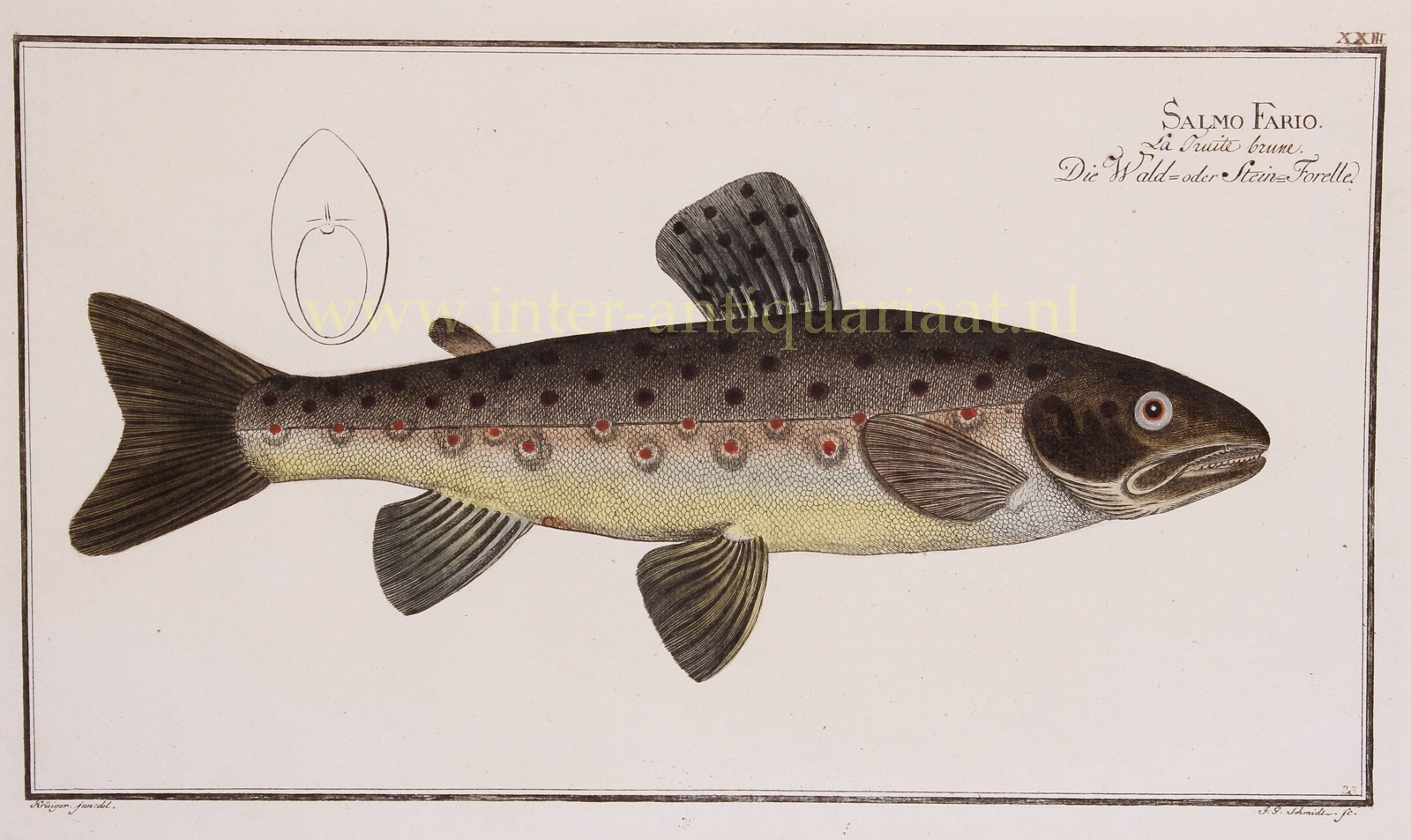THE BROWN TROUT
“Salmo Fario/La truite brune/Die Wald- oder Steinforelle” (plate 23), copper engraving made by Ludwig Schmidt after the drawing of Krüger jr, for Markus Elieser Bloch’s “Allgemeine Naturgeschichte der Fische” published in Berlin between 1782 and 1795. With original hand colouring. Size: 19 x 38 cm.
Brown trout is a species of freshwater fish in the salmon family, found primarily in the Northern Hemisphere. It has a brown or olive-colored body with black spots and a distinctive reddish-orange belly. Brown trout are highly adaptable and can be found in a variety of habitats, from fast-moving streams to slow-moving rivers and stillwaters. They feed on a variety of prey including insects, crustaceans, and small fish. Brown trout today are popular gamefish, prized for their fighting ability and are widely stocked for recreational fishing purposes.
Bloch’s labour on the “Allgemeine Naturgeschichte der Fische” occupied a considerable portion of his life, and is considered to have laid the foundations of the science of ichthyology. The publication was encouraged by a large subscription, and it passed rapidly through five editions in German and in French. Bloch made little or no alteration in the systematic arrangement of Peter Artedi and Carl Linnaeus, although he was disposed to introduce into the classification some modifications depending on the structure of the gills. To the number of genera before established, he found it necessary to add nineteen new ones, and he described 276 species new to science, many of them inhabitants of the remotest parts of the ocean, and by the brilliancy of their colours, or the singularity of their forms, as much objects of popular admiration as of scientific curiosity.
Bloch is considered the most important ichthyologist of the 18th century.
Price: SOLD


